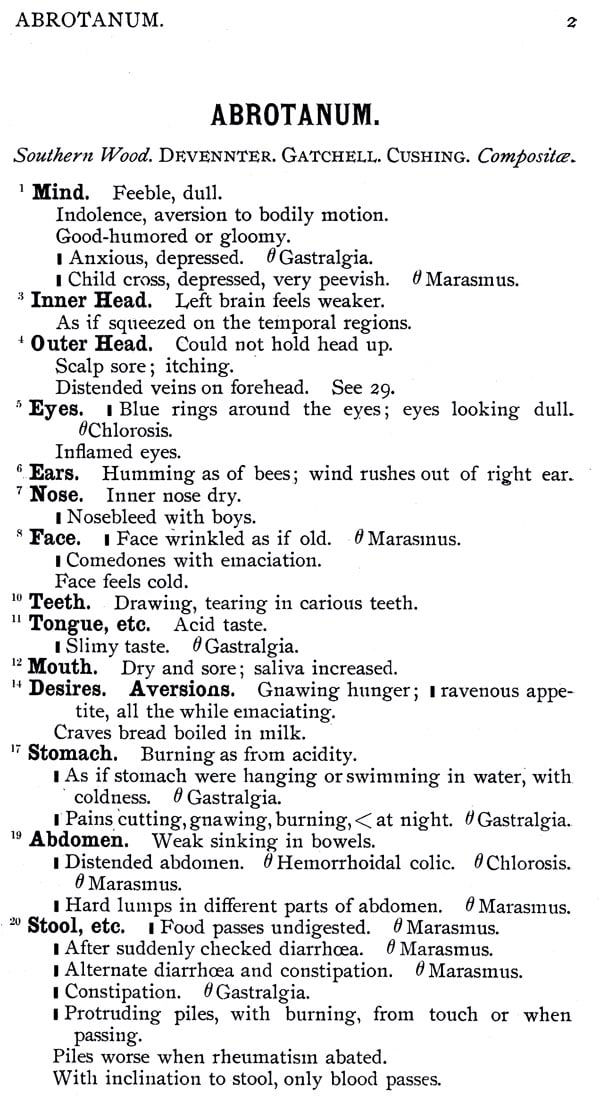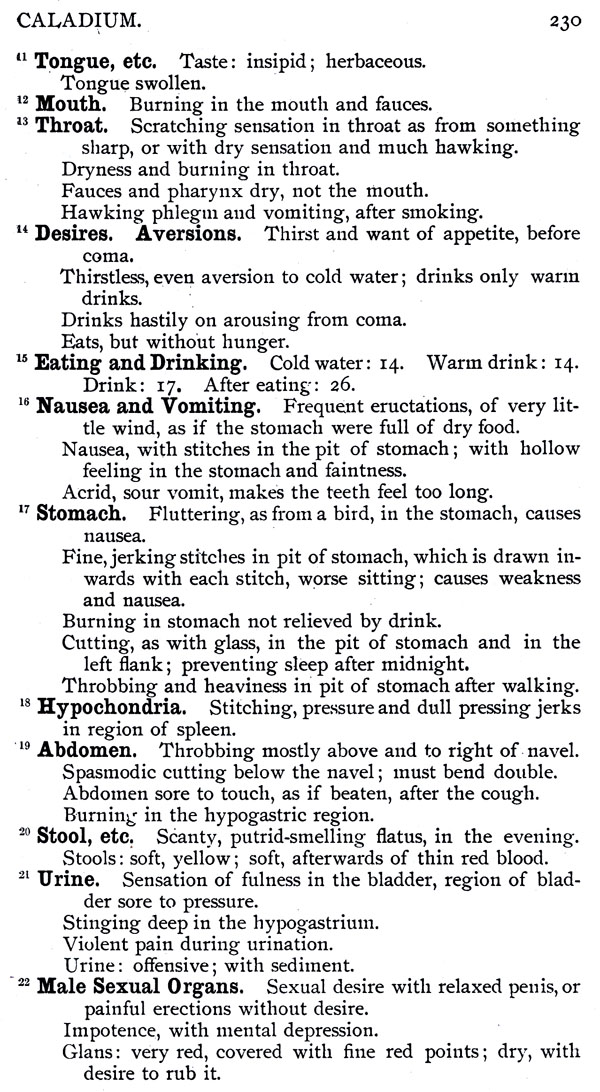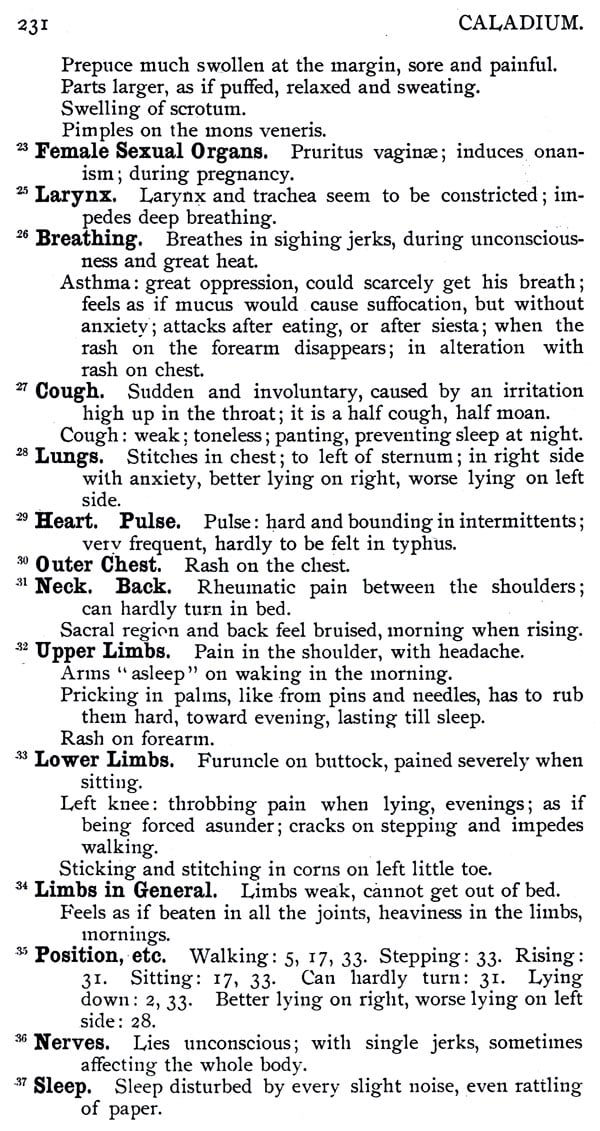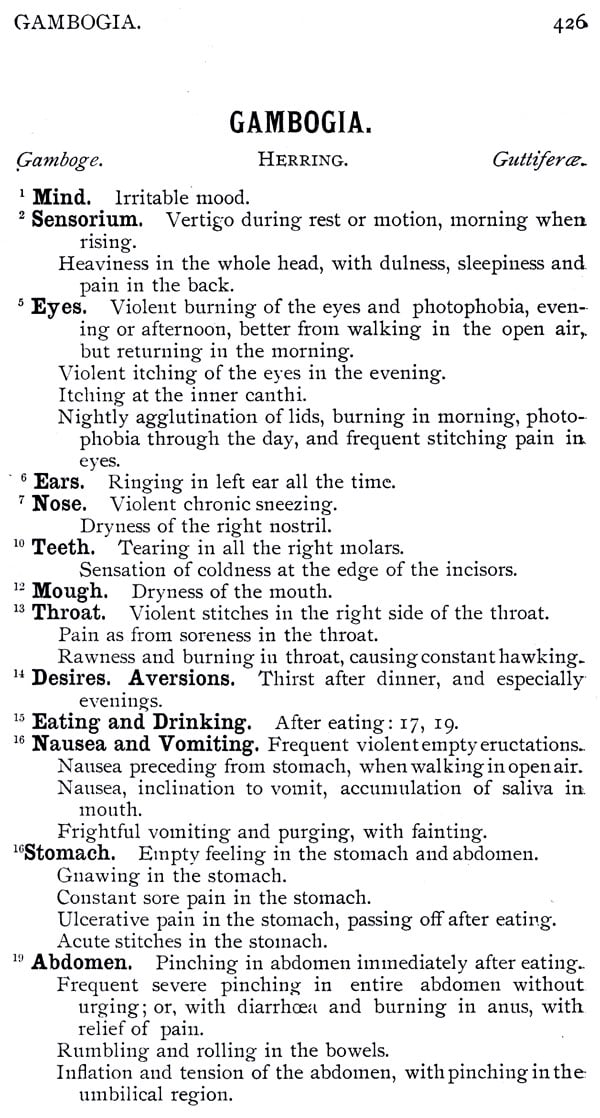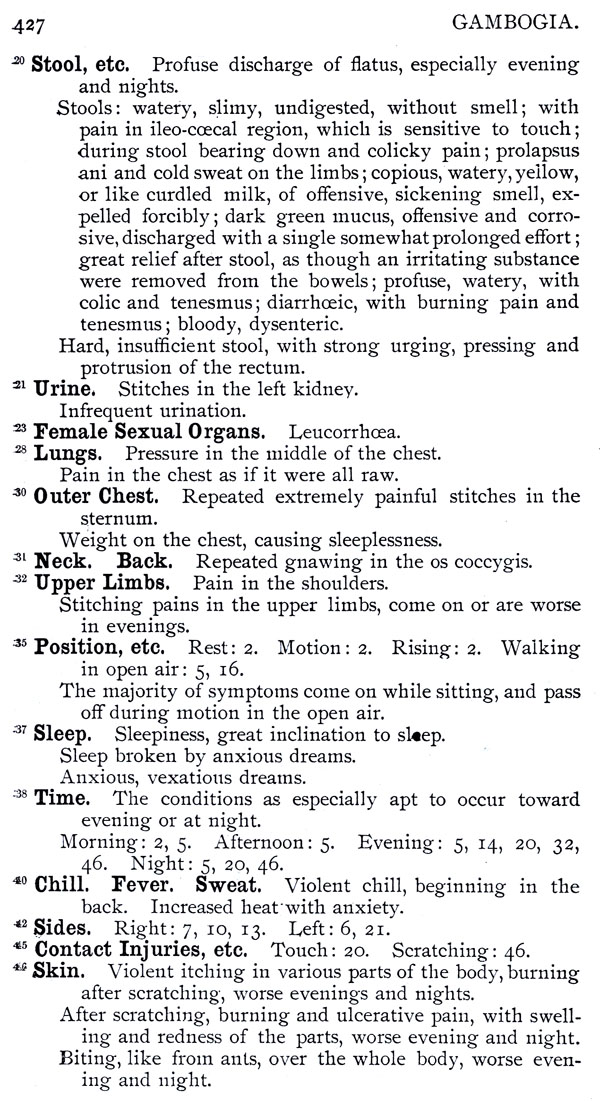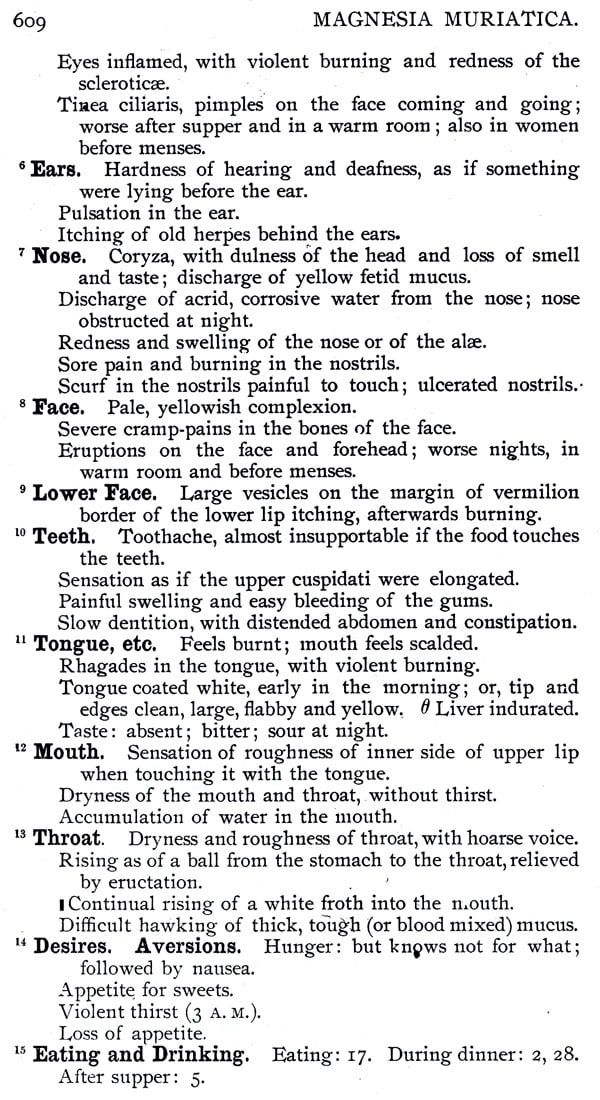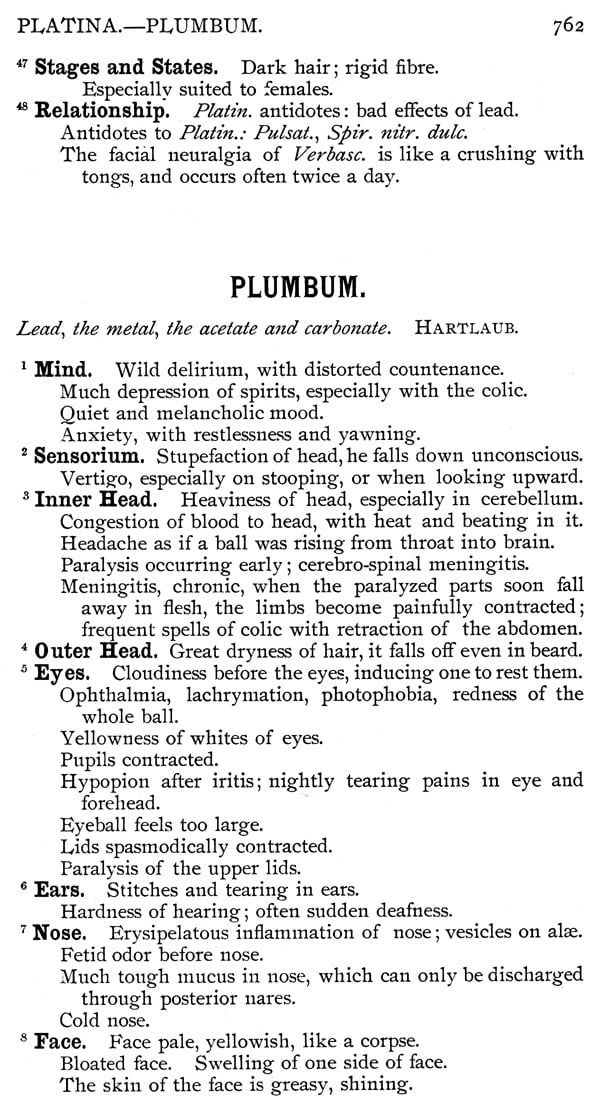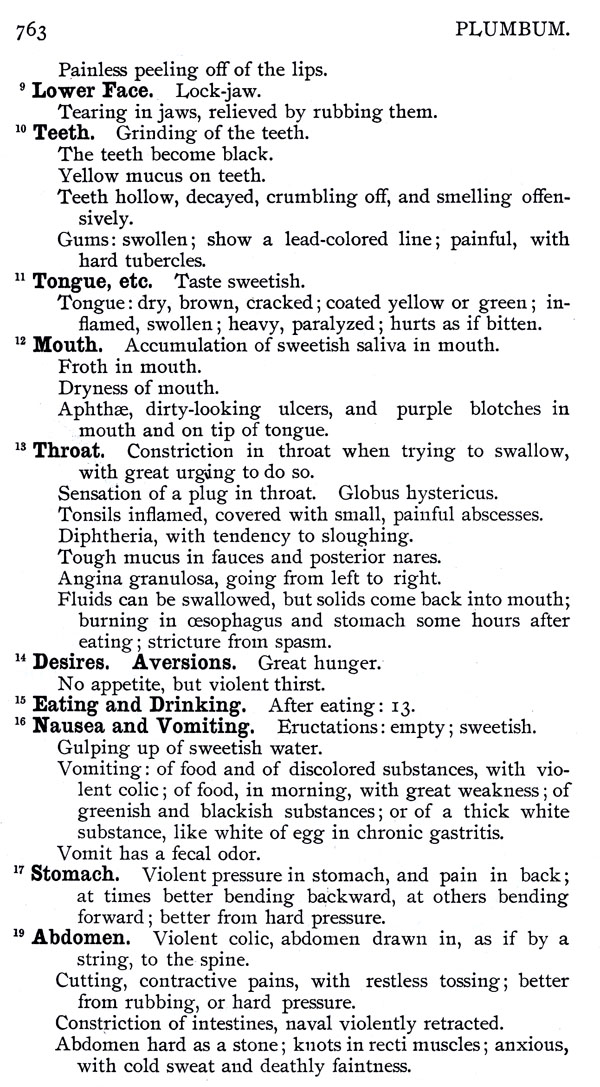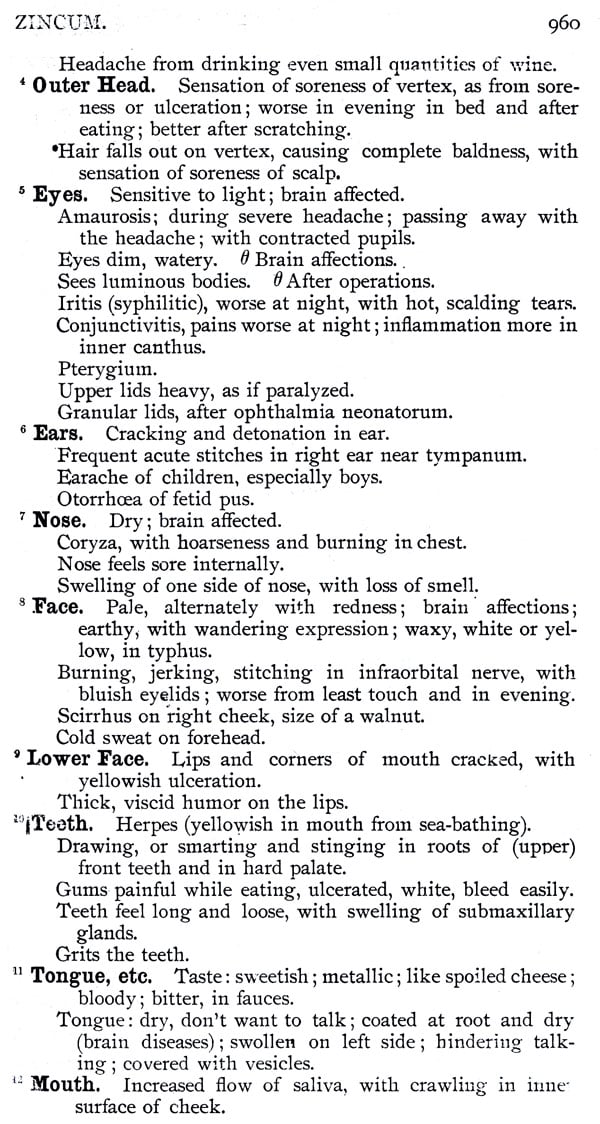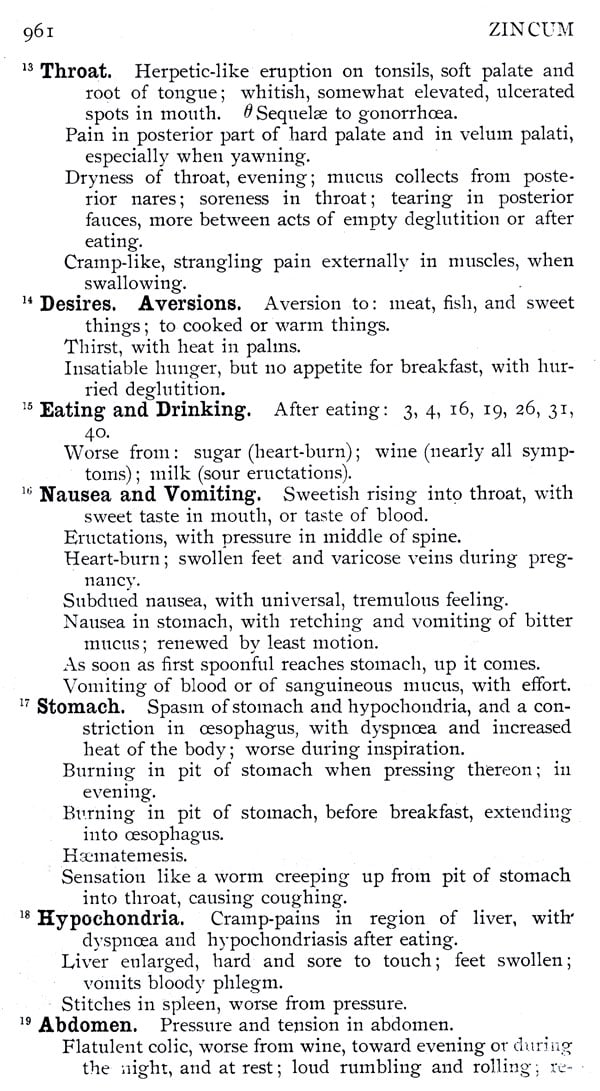
Condensed - Materia Medica (Revised Enlarged and Improved Edition)
Book Specification
| Item Code: | NAS777 |
| Author: | C. Hering |
| Publisher: | B. Jain Publishers (P) Ltd |
| Language: | ENGLISH |
| Edition: | 2017 |
| ISBN: | 9788131910733 |
| Pages: | 992 |
| Cover: | HARDCOVER |
| Other Details | 9.00 X 6.00 inch |
| Weight | 910 gm |
Book Description
The book consists of about 209 remedies, somewhat of a preview of what Hering created with his Guiding Symptoms. The symptoms of each remedy are divided into 48 sections with cross-references and characteristic symptoms. Fore runner of Guiding Symptoms, this book was prepared with the help of Hering's students Farrington and Korndoefer.
Dr Constantine Hering (1800-1880) father of American Homeopathy is known for the proving of Lachesis and many other remedies from the ophidia group. He was a voracious writer. Some of his well-known work includes: Comparative Materia Medica, Analytical Therapeutics, The Guiding Symptoms of Materia Medica (10 volumes). He is also known for the discovery of the 'Law of Direction of Cure'.
In placing this work before the profession, the author wishes it to be understood that it is not with any desire to have such condensed work supersede the study and use of the more complete Materia Medica; nor is it on account of any supposed incorrectness or unreliability of the original works of Hahnemann, for these, after nearly three-fourths of a century of daily searching scrutiny, must be accepted as bearing the imprint of being wrought by a master mind-almost intuitive perception having guided in the work.
The real object in preparing this work has been to give in a condensed form, to the student of Homceopatfiy, such absolutely necessary material as would enable him, in a comparatively short time, to gain knowledge of such important leading symptoms and conditions as are characteristic of each remedy-knowledge which is imperatively necessary for everyday practice. The large and more complete works pre-sent by their size, if by nought else, great obstacles to the rapid acquirement of a practical knowledge of the genius of each remedy. In order to overcome this, efforts have been made in the past to condense the material of the larger works. Clinical experience only can verify symptoms obtained through proving; this we are gaining daily and profiting thereby. Year by year we have been enabled, through such experience, to separate wheat from tares. We have now garnered at least a fair percentage of good wheat-and the harvest season is not yet over.
The material for this work has been culled from the manuscript and other material collected for a much larger work on verified and important symptoms, viz., "Guiding Symptoms," now in process of publication, on which many years of careful research have been bestowed.
Not all of our remedies are herein given, inasmuch as this work is intended for a text-book, a manual, not a complete Materia Medica; and though it was desirable to condense, it was also necessary to give the really useful symptoms sufficiently' complete to make up the picture of each remedy so as to be practically useful, thus making it impossible to give more remedies, without so increasing the bulk as to render the book unsuited to its purpose.
Regarding the arrangement of symptoms, it will be found to correspond to that used in the "Analytical Therapeutics;" for full explanation, see introduction to the same.
The symptoms of each remedy are divided into forty-eight chapters-thus, Mind and disposition ; this contains all mental states. 2 Sensorium, embracing over-sensitiveness and irritability of brain and senses ; vertigo ; dullness, etc. Inner head, pains, etc. 4 Outer head, symptoms of bones, periosteum, skin, and hair ; also motions and positions of head. ' Sight and eyes. Hearing and ears. ' Smell and nose. 8 Face, includ-ing expression, etc. Lower jaw, outer mouth, chin, and sub-maxillary glands. " Teeth and gums. " Taste, speech and tongue. 12 Inner mouth. 13 Palate and throat. " Desire for food and drink. 1" Effects of eating and drinking. 16 Gastric symptoms. 17 Epigastric region. 'Hypochondria. " Abdo-men. 'Rectum and anus, including emission of flatus, stools, hemorrhoids. 'Urinary organs and urine. 22 Male functions and organs. "Female organs. 24 Pregnancy and parturition, including mamma: ; also infants at the breast. 25 Voice and larynx. "Respiration. " Cough. " Inner chest and lungs. 2" Heart and circulation. " Outer chest. "' Neck and back. Upper limbs. 'Lower limbs. 34 All the limbs. "Rest, motion and position ; modalities will be indexed so as to refer to chapter number. 36 Nerves ; this chapter embraces symp-toms pertaining more especially to the nervous system ; trem-bling, spasms, weakness, lameness or paralysis. " Sleep and dreams. 3'1 Times of day, indexed. 39 Temperature and weather, indexed. "Chill, fever and sweat. " Attacks and periodicity, indexed. " Sides and relation to space, indexed. Sensations; predominating feelings. Tissues-in a work of this character but little need be said on this subject. In the " Guiding Symptoms " more prominence is given thereto. " Passive motion, contact, injuries, etc. "Skin. "Stages of life, constitution, diathesis, dyscrasia. " Relationship with other drugs. For convenience and to save space, some of these headings have been shortened throughout the work.
The 1 corresponding to the third degree of distinction in Bcenninghausen's Repertory, has here more significance than in the " Guiding Symptoms ;" there it stands before symptoms verified by cures, here it marks in most instances characteristic symptoms.
** Sample Pages**

